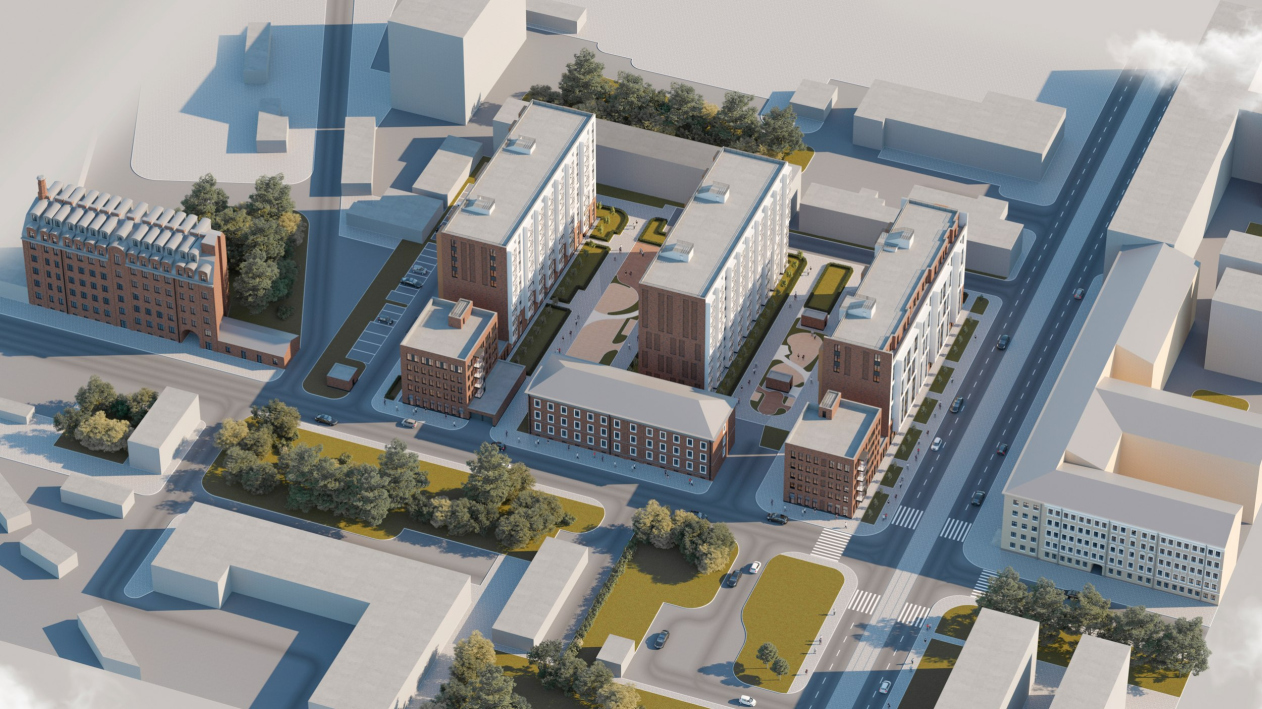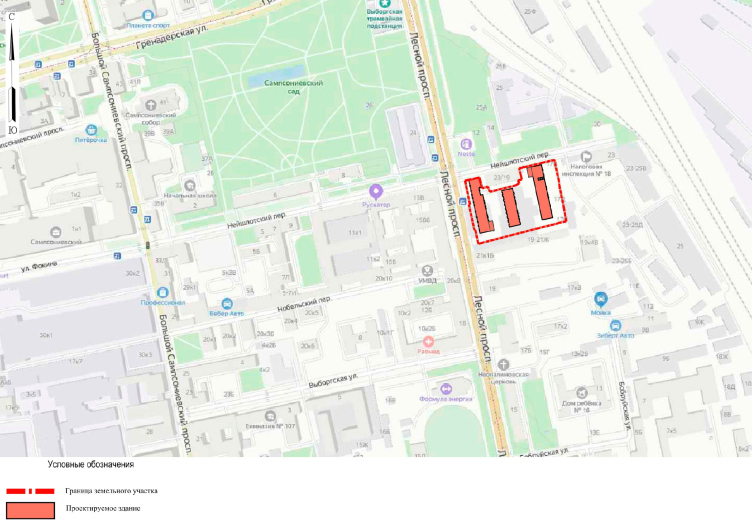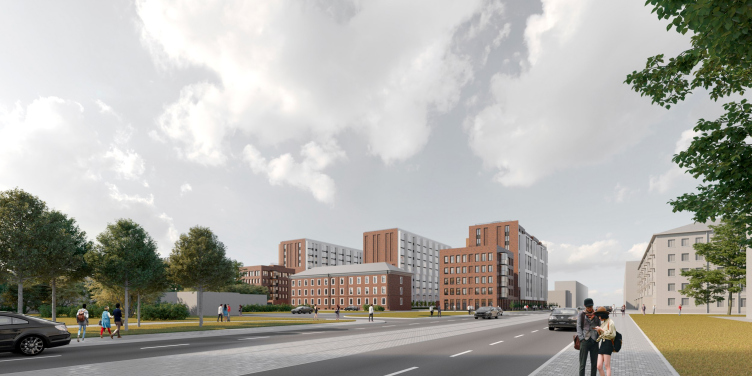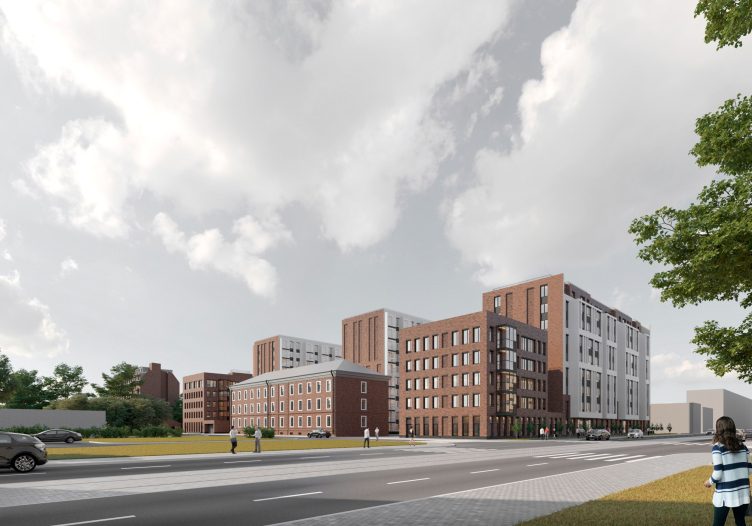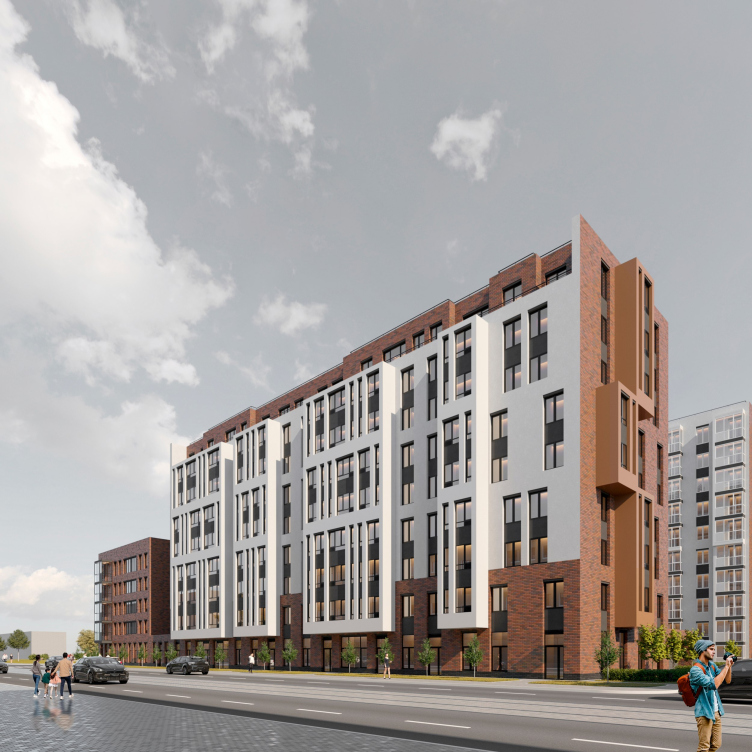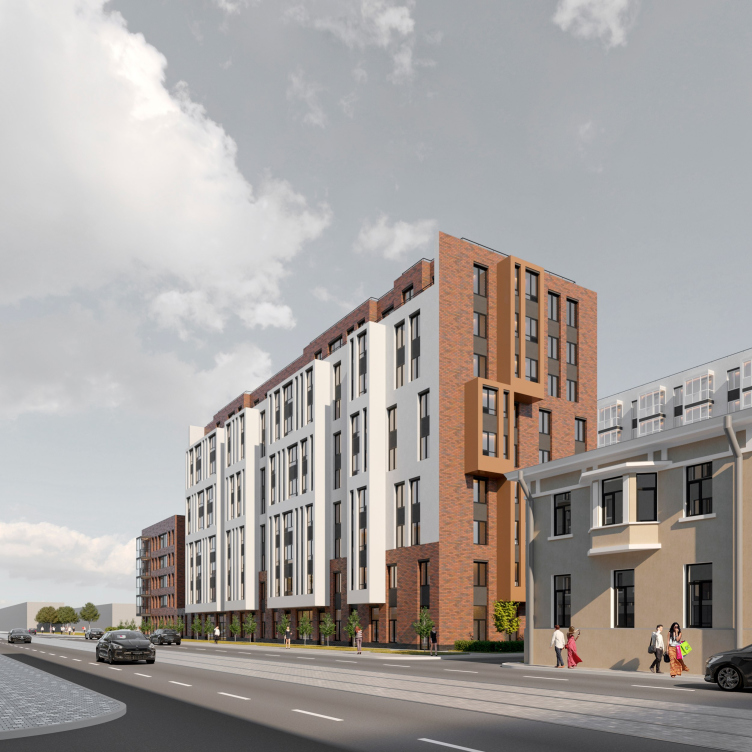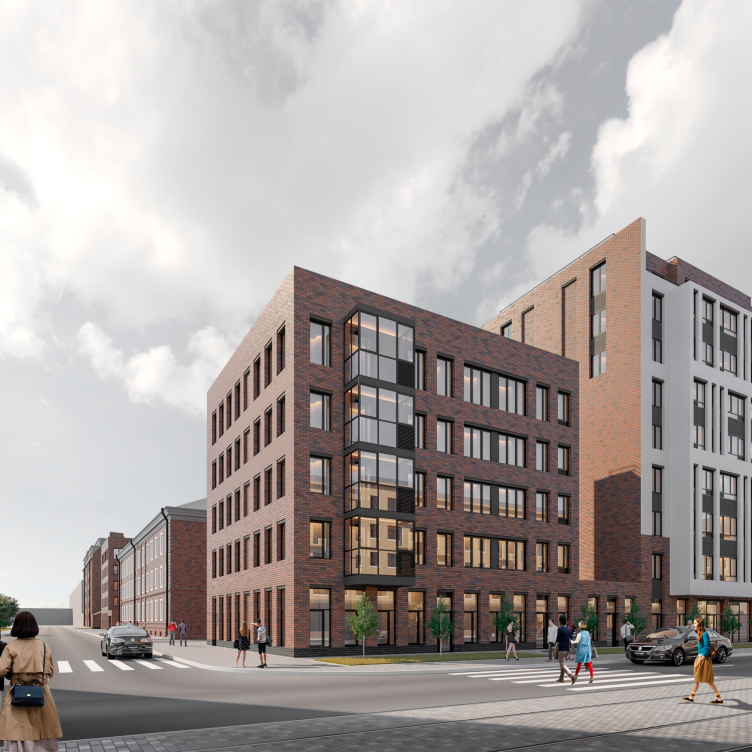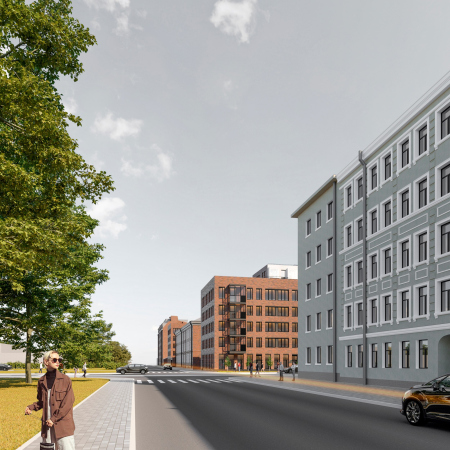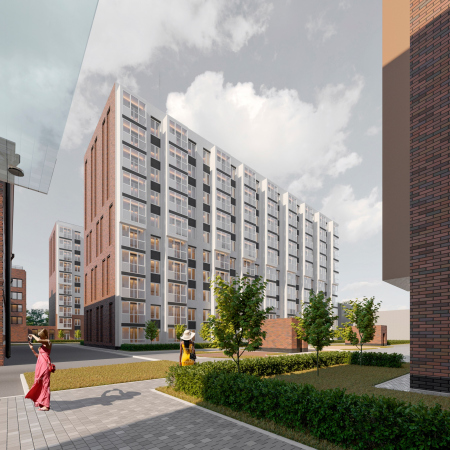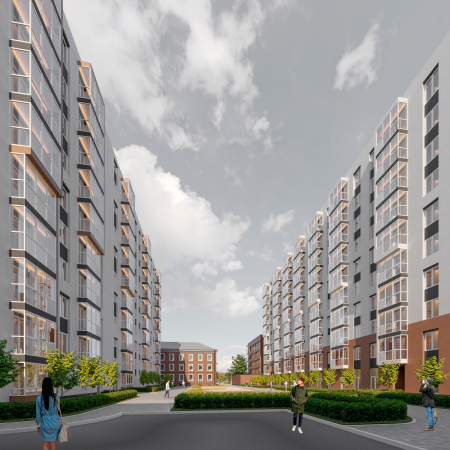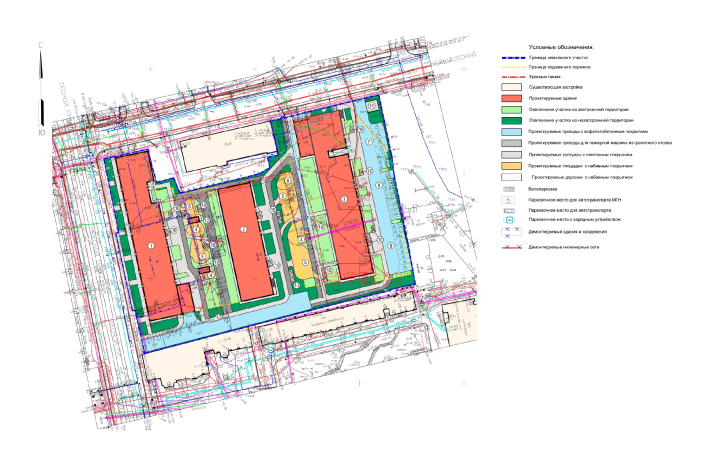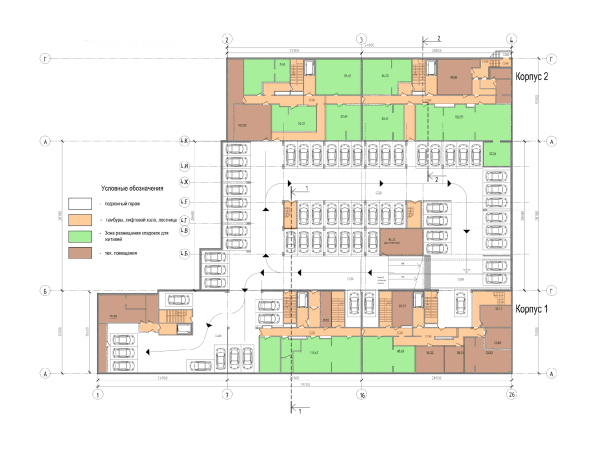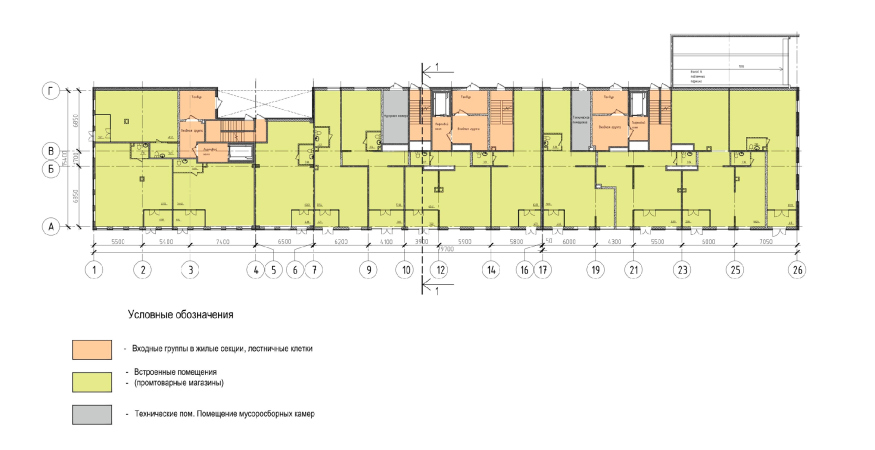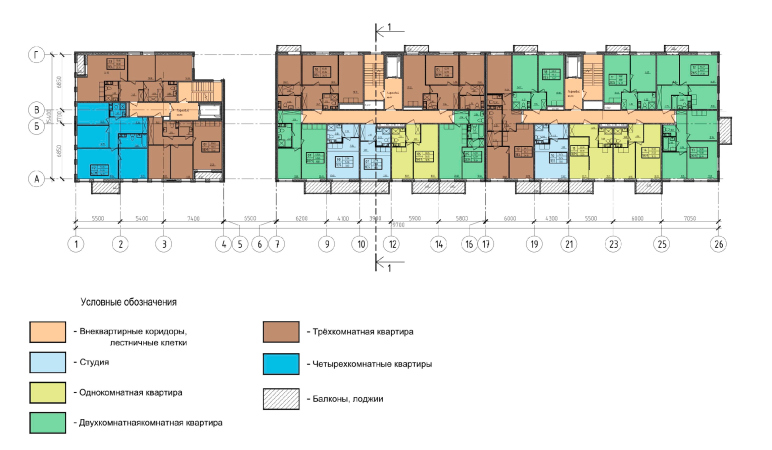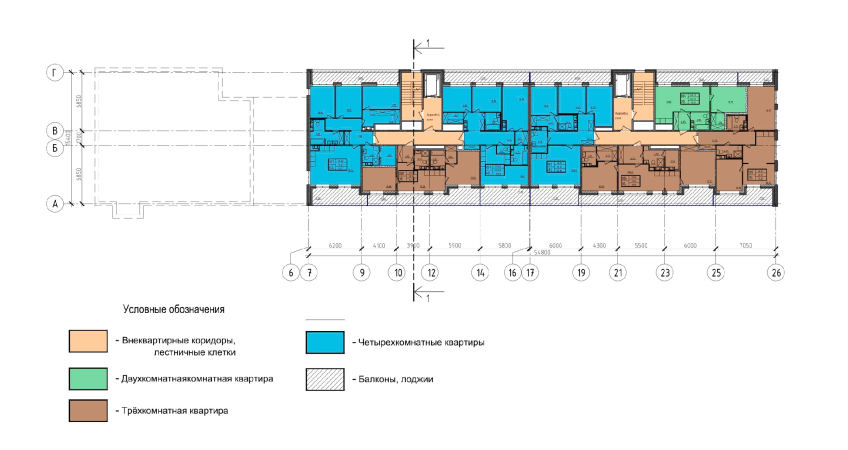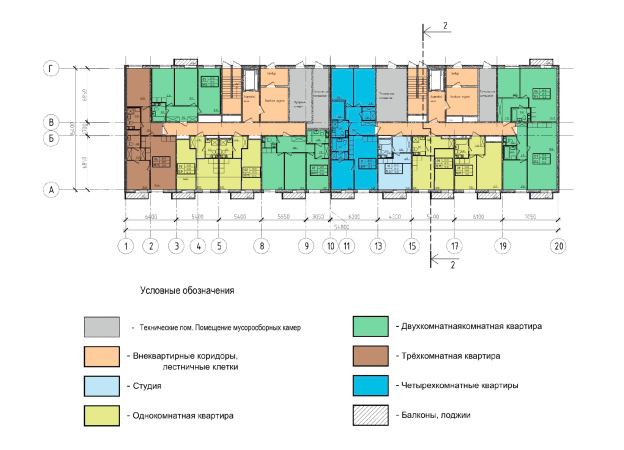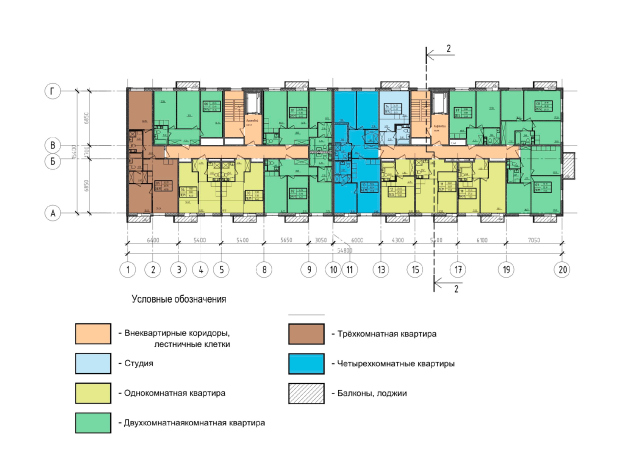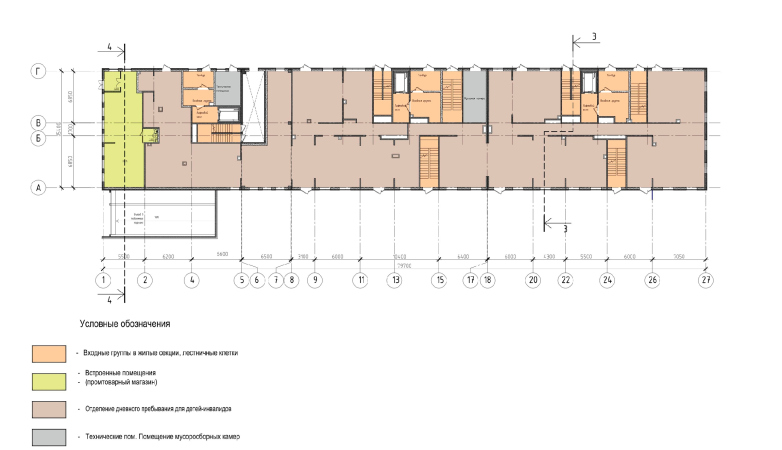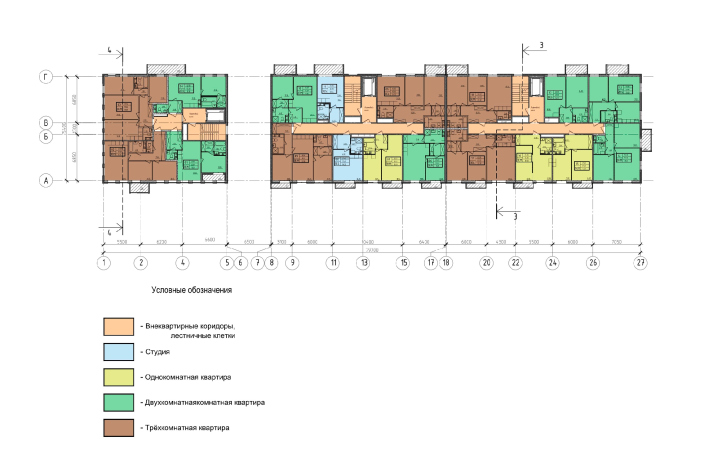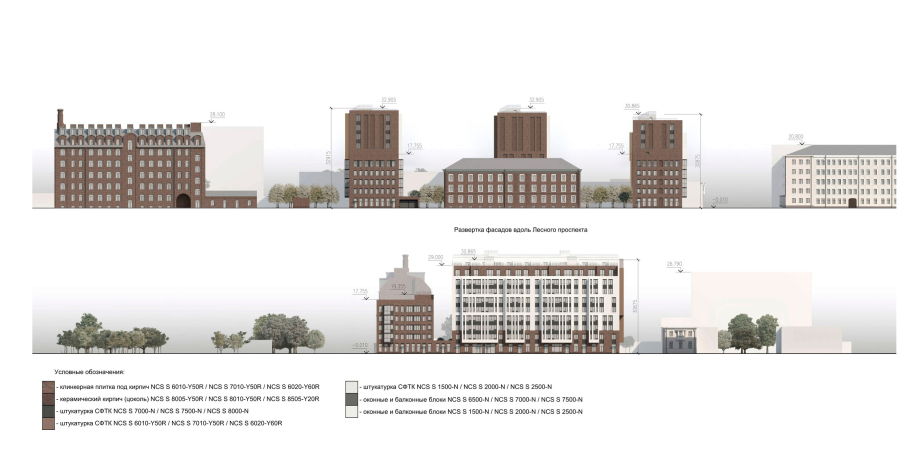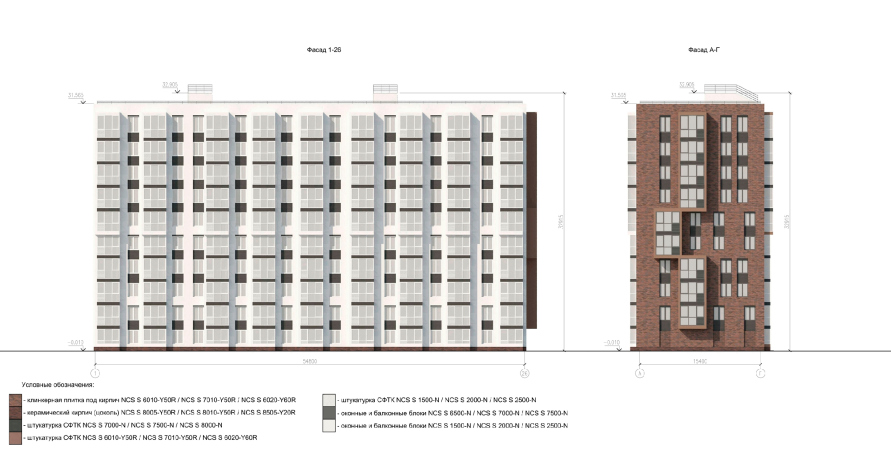iLona housing complex
Copyright: © Anatoly Stolyarchuk Architectural Studio
The main challenge that the architects were faced with was the scale of the new complex: due to the technical and economic performance specifications, it was to be taller than its surroundings. There are already a few in-construction and completed buildings in this area of about the same size – “Neishlotskaya Krepost” housing complex, Nobelius, Dom na Vyborgskoi”, “Lesnoy 19” business center, and their common problem is that they all stand close to two- or three-story houses of the Nobel town.
iLona housing complex
Copyright: © Anatoly Stolyarchuk Architectural Studio
The architects managed to come up with a project that retains the construction scale of the Neishlotsky Alley: two five-story buildings flank the “horse-drawn railway” house, while three ten-story buildings are pushed in the depth of the quarter, and, due to the perspective difference, are perceived as being about the same height as the Benoît milk complex. Considering the fact that this part of the compound overlooks the park, and the tall houses are turned with their side ends to the alley, the architects avoid the effect of a massive wall, achieving a smooth and comfortable transition to the bigger scale.
iLona housing complex
Copyright: © Anatoly Stolyarchuk Architectural Studio
iLona housing complex
Copyright: © Anatoly Stolyarchuk Architectural Studio
From the side of the Lesnoy Avenue, we see a different picture: the red line is marked by a building of a slightly smaller height than the other two slabs, its top floor pushed back from the cornice. This place, however, is probably the most controversial one in the project because the Nobel mansion, which stands nearby, gets a little bit lost against the background of the new neighbor, especially in view of the fact that the sidewalls on this side of the complex received a glazing pattern, while a firewall, had it been here instead, would have been better suited for a “background” role. On the other hand, the buildings are not exactly pushed up against each other, the the gap between them is wide enough to soften the contrast.
iLona housing complex
Copyright: © Anatoly Stolyarchuk Architectural Studio
iLona housing complex
Copyright: © Anatoly Stolyarchuk Architectural Studio
Making the complex transparent and coming up with an elegant skyline, the architects also paid attention to the facades, making sure that they look good from different angles. The five-story buildings are deliberately designed in a minimalist manner, in order not to be at odds with the historical context – they are fully clad in Klinker tiles. The large glazing pattern and the black details in the ascetic decor add a “loft” feeling, which correlates with the industrial past of this area and the proximity of the railway.
iLona housing complex
Copyright: © Anatoly Stolyarchuk Architectural Studio
In the cladding of the high-rise buildings of the complex white stucco appears, which helps to accentuate the volumetric parts. While on the “outer” side of the whole complex the scale of the two lower floors is supported by Klinker brick cladding, on the “inner” side the white color spills virtually across the entire facade. The grouping of balconies and windows is also meant to mitigate the scale of the slabs, dividing them into a few visual blocks.
YIT is a Finnish construction company, hence some unusual features of the complex: for example, spacious Finnish balconies, a possibility of installing a sauna in the apartment, and storage rooms in the basement. The complex consists of 400 apartments with a floor space ranging from 23 to 90 square meters; there are from 4 to 7 apartments per floor. During the construction stage the buyer has a few floor plan options to choose from – the Euro format with a kitchen/living room or the traditional format with separate rooms. On the top floors, there are apartments with terraces commanding sweeping views.
Yet another peculiar feature of the complex that got a name of iLona is its plans for receiving the BREEAM certificate. In order to make sure that the complex meets its standards, the architects gave the apartments plenty of natural light, a mechanical ventilation system with natural air flow is provided, and the basic elements of a “smart home” are installed: residents will be able to regulate the heating systems, light, temperature and humidity, as well as control leaks, and remotely turn on or off separate power lines.
The first building that the developer is planning to launch into operation is the one that is situated closest to the railway line. A children’s rehabilitation center will open on its first floor, the premises for which will be later on handed over to the city. After the complex is completed, the corner of the Neishlotsky Alley and the Lesnoy Avenue will be seen more clearly – because it used to be marked by just the trees and the entire construction front. The retail in the bottom floors will make this part of the city, hitherto lying empty, more active and involved in public life.

